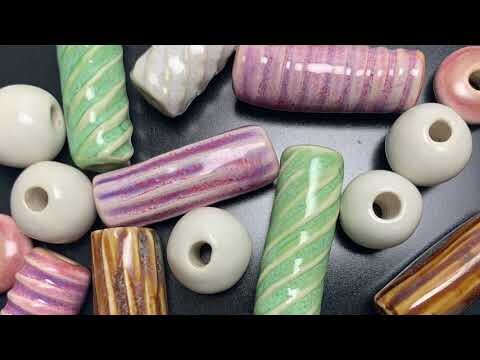When it comes to ceramics, the firing process plays a crucial role in determining the final outcome of the piece. Fast firing and slow firing are two distinct methods with their own advantages and drawbacks. While fast firing offers the benefit of shorter production times, slow firing allows for more precise control over the final result. In this article, we will explore the differences between fast firing and slow firing in ceramics, and the impact each method has on the quality and characteristics of the finished product. Whether you’re a seasoned ceramic artist or a beginner looking to learn more about the craft, understanding the implications of firing speed will undoubtedly enhance your work.
What are the distinctions between high fire and low fire ceramics?
When it comes to ceramics, the temperature at which they are fired can make a significant difference in their properties. Low fire ceramics, made with earthenware clay, are fired at lower temperatures, resulting in a delicate texture and porous surface. On the other hand, high fire ceramics, crafted from stoneware or porcelain clay, are fired at higher temperatures, making them more durable and water-resistant. The choice between high fire and low fire ceramics ultimately depends on the desired aesthetic and functionality of the piece.
What are the two types of firing in ceramics?
In the first stage, bisque firing, the greenware is transformed into a durable, semi-vitrified porous state, allowing for safe handling during the glazing and decorating process. This firing also involves the burning out of carbonaceous materials, preparing the ceramics for the second stage – glaze firing. During glaze firing, the ceramics are fired at a higher temperature to fully vitrify and seal the glaze, resulting in a smooth, glassy finish and making the ceramics functional and waterproof. These two types of firing are crucial in the ceramics process, ensuring the pieces are both durable and aesthetically pleasing.
What is the effect of firing temperature on ceramics?
Firing temperature plays a crucial role in the transformation of ceramics. As the temperature rises above 1652°F (900°C), the clay body undergoes significant changes. The silica within the clay starts to melt, causing the clay particles to fuse together and shrink, resulting in a process known as vitrification. This transformation creates a more durable and compact material known as metakaolin.
Continuing to increase the firing temperature to 1832°F (1000°C) leads to further changes in the ceramic structure. At this temperature, the clay crystals begin to break down and melt, further enhancing the bonding between particles. This melting process allows for increased strength and durability in the final ceramic product. The controlled firing temperature is essential in achieving the desired properties and characteristics in ceramics.
In conclusion, the firing temperature directly impacts the physical and chemical properties of ceramics. By carefully controlling the temperature during the firing process, artisans can manipulate the structure of the clay body to achieve specific characteristics such as strength, durability, and porosity. Understanding how firing temperature affects ceramics is essential for creating high-quality and functional ceramic products.
The Battle of Speed: Exploring the Differences in Firing Techniques
In the realm of competitive shooting, the battle of speed is a crucial element that can make or break a shooter’s performance. By exploring the differences in firing techniques, shooters can gain a deeper understanding of how to improve their speed and accuracy on the range. Whether it’s mastering the quick draw or perfecting the follow-up shot, honing these skills can give shooters a competitive edge in any shooting discipline.
Understanding the nuances of firing techniques can have a significant impact on a shooter’s success. From adjusting grip pressure to finding the optimal sight picture, every detail plays a crucial role in achieving fast and accurate shots. By delving into the intricacies of speed shooting, shooters can fine-tune their skills and elevate their performance to new heights in the exhilarating battle of speed on the range.
Unleashing Creativity: Understanding the Impact of Firing Speed on Ceramic Artistry
Are you ready to take your ceramic artistry to the next level? Understanding the impact of firing speed on your creations is crucial in unleashing your creativity. By experimenting with different firing speeds, you can achieve unique and stunning results that will set your ceramic art apart from the rest. Whether you’re a seasoned ceramic artist or just starting out, mastering the intricacies of firing speed will open up a world of possibilities and allow you to truly express your artistic vision.
In the world of ceramic artistry, firing speed can make all the difference. The rate at which your pieces are fired can dramatically affect the final outcome, from the colors and textures to the overall aesthetic. By delving into the impact of firing speed, you can harness its power to create one-of-a-kind pieces that showcase your artistic flair. So, why not take the leap and explore the endless possibilities that firing speed has to offer? Unleash your creativity and watch as your ceramic artistry reaches new heights.
In conclusion, the choice between fast firing and slow firing in ceramics ultimately depends on the specific needs of the artist or manufacturer. While fast firing offers efficiency and time-saving benefits, slow firing allows for more control over the final results and can produce unique effects. Both methods have their own advantages and drawbacks, and it is important for individuals to carefully consider their desired outcomes before deciding which firing technique to utilize in their ceramic projects. Ultimately, whether opting for speed or precision, the key is to experiment, learn, and adapt to achieve the desired outcome in the world of ceramics.



